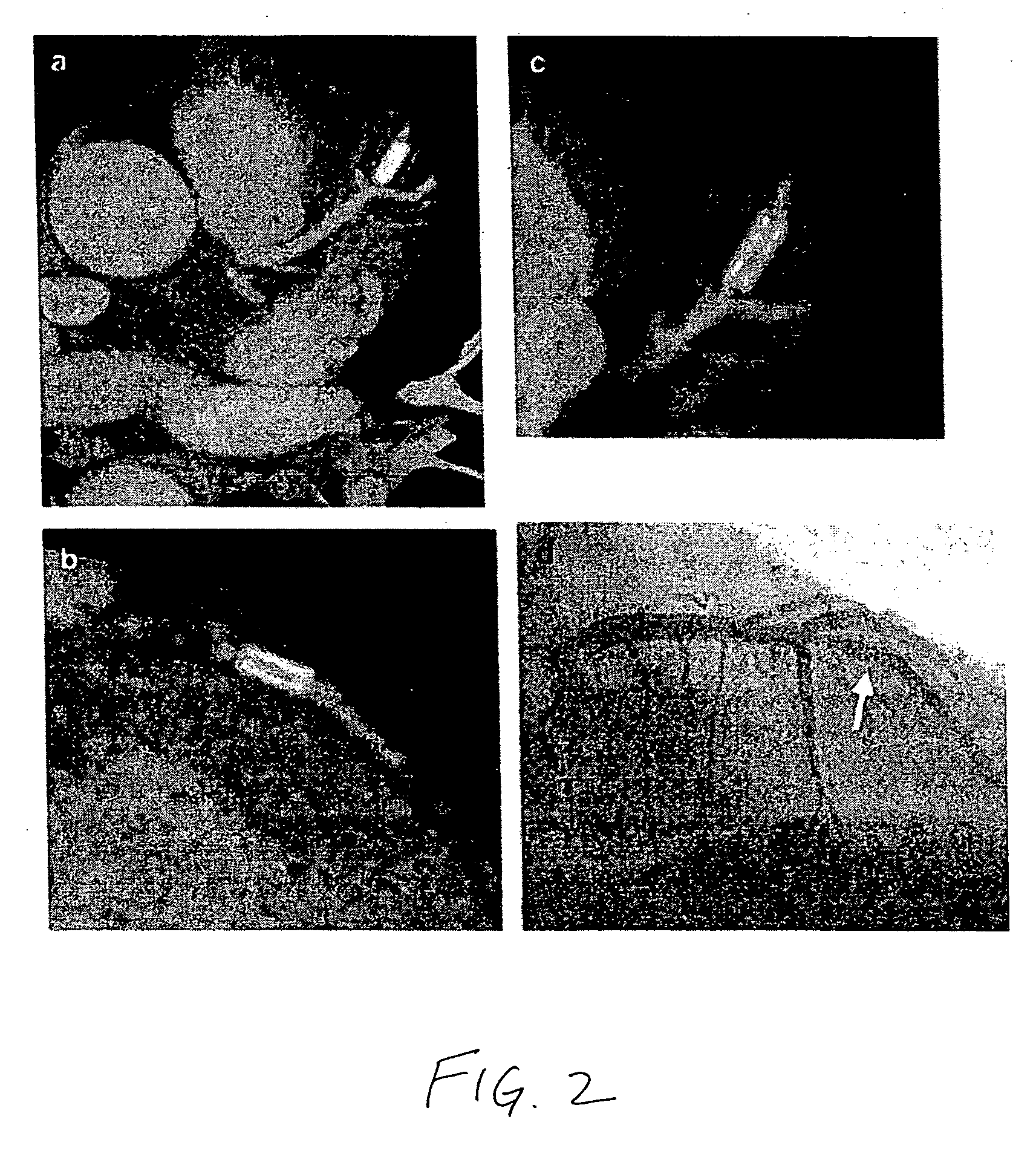Medical devices having a temporary radiopaque coating
a technology of medical devices and radiopaque coating, which is applied in the direction of prosthesis, catheter, surgery, etc., can solve the problems of limited use of ct angiography in this contex
- Summary
- Abstract
- Description
- Claims
- Application Information
AI Technical Summary
Benefits of technology
Problems solved by technology
Method used
Image
Examples
Embodiment Construction
[0013]The present invention provides a medical device comprising radiopaque water-dispersible metallic nanoparticles, wherein the nanoparticles are released from the medical device upon implantation of the device.
[0014]The term “metallic nanoparticle” refers to a particle having a diameter in the range of about 1 nm to 1000 nm that comprises a metallic material, an alloy, or other mixture of metallic materials. The metallic material may be any metal having sufficient radiopacity for visualization under x-ray fluoroscopy, including iodine, barium, tantalum, tungsten, rhenium, osmium, iridium, noble metals, platinum, gold, and bismuth. Oxides and compounds of the metals listed, such as bismuth subcarbonate and bismuth oxychloride, may also be used. Salts of the metals listed, such as barium salts, iodine salts, or bismuth salts, may also be used.
[0015]The term “water-dispersible” refers to the ability of the material to form an essentially unaggregated dispersion of discrete particles...
PUM
| Property | Measurement | Unit |
|---|---|---|
| diameter | aaaaa | aaaaa |
| diameter | aaaaa | aaaaa |
| diameter | aaaaa | aaaaa |
Abstract
Description
Claims
Application Information
 Login to View More
Login to View More - R&D
- Intellectual Property
- Life Sciences
- Materials
- Tech Scout
- Unparalleled Data Quality
- Higher Quality Content
- 60% Fewer Hallucinations
Browse by: Latest US Patents, China's latest patents, Technical Efficacy Thesaurus, Application Domain, Technology Topic, Popular Technical Reports.
© 2025 PatSnap. All rights reserved.Legal|Privacy policy|Modern Slavery Act Transparency Statement|Sitemap|About US| Contact US: help@patsnap.com


